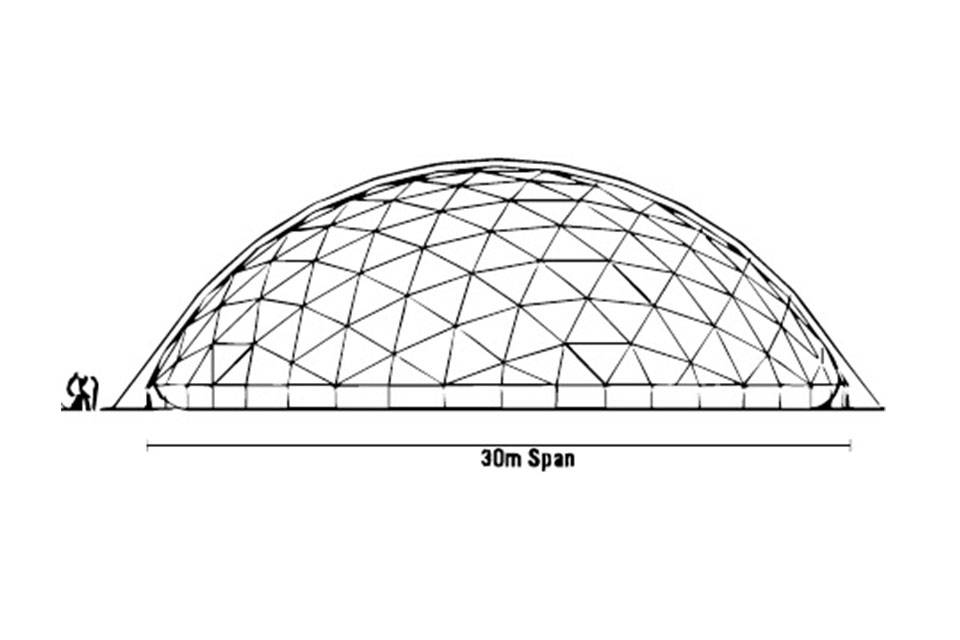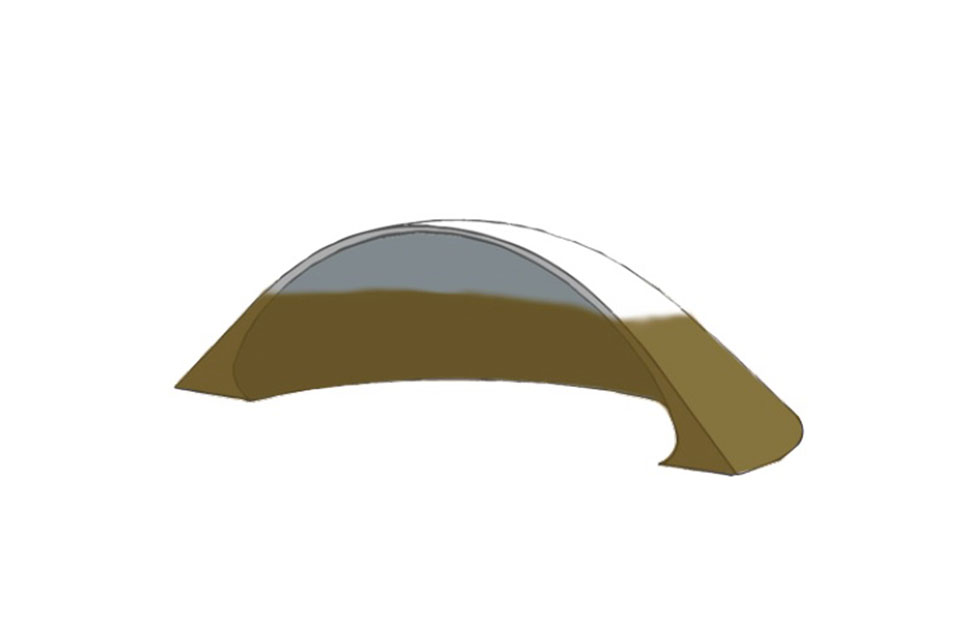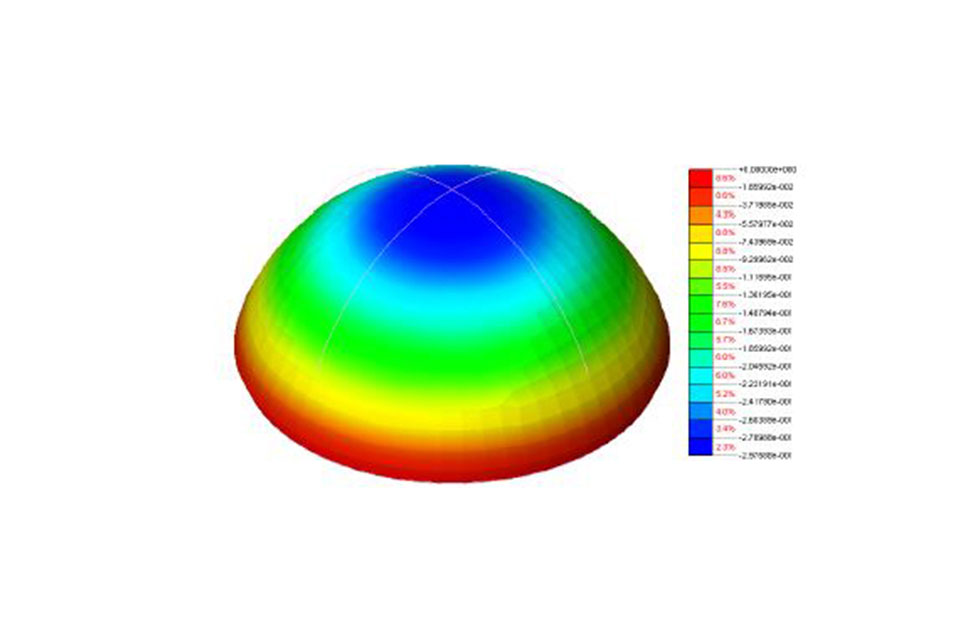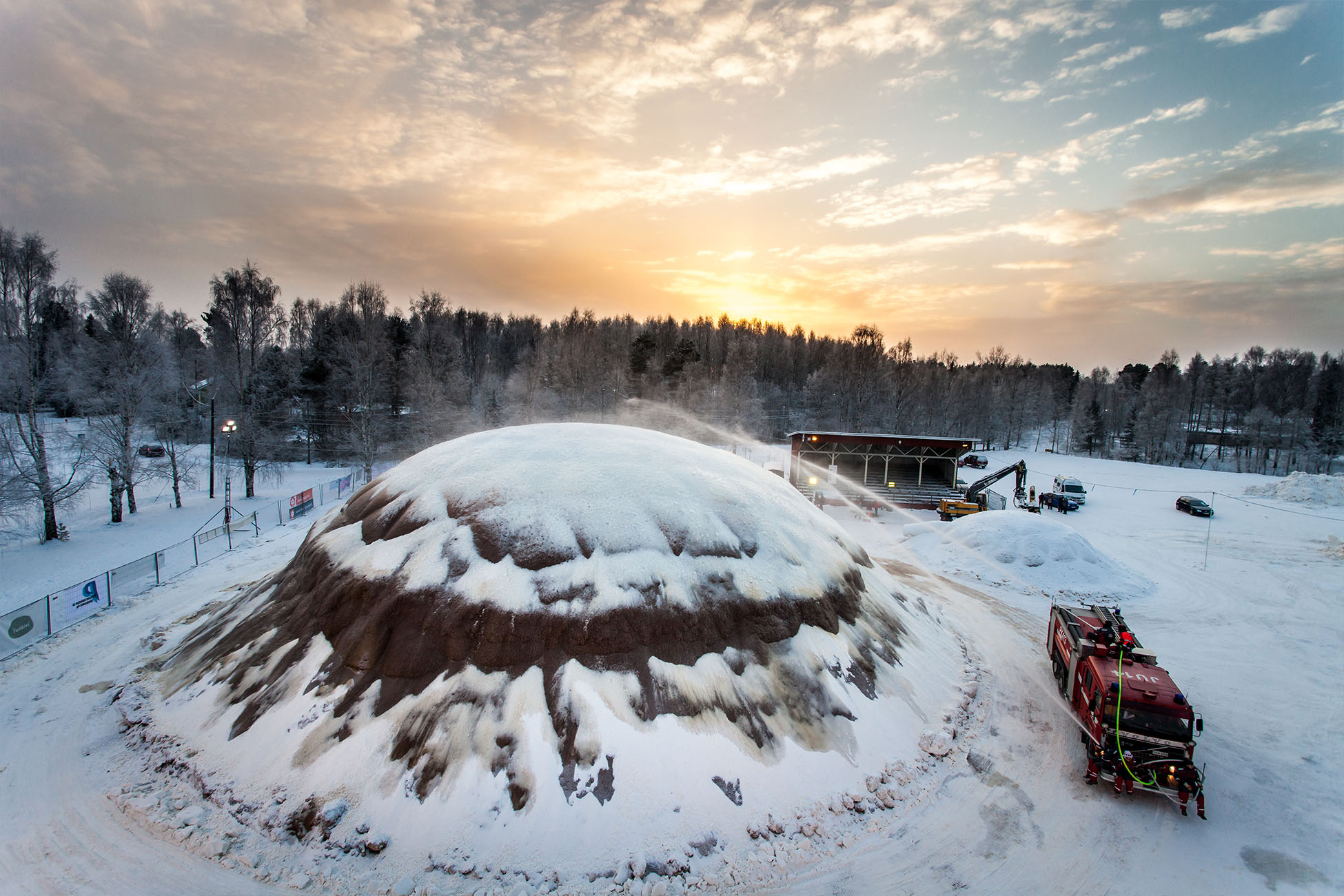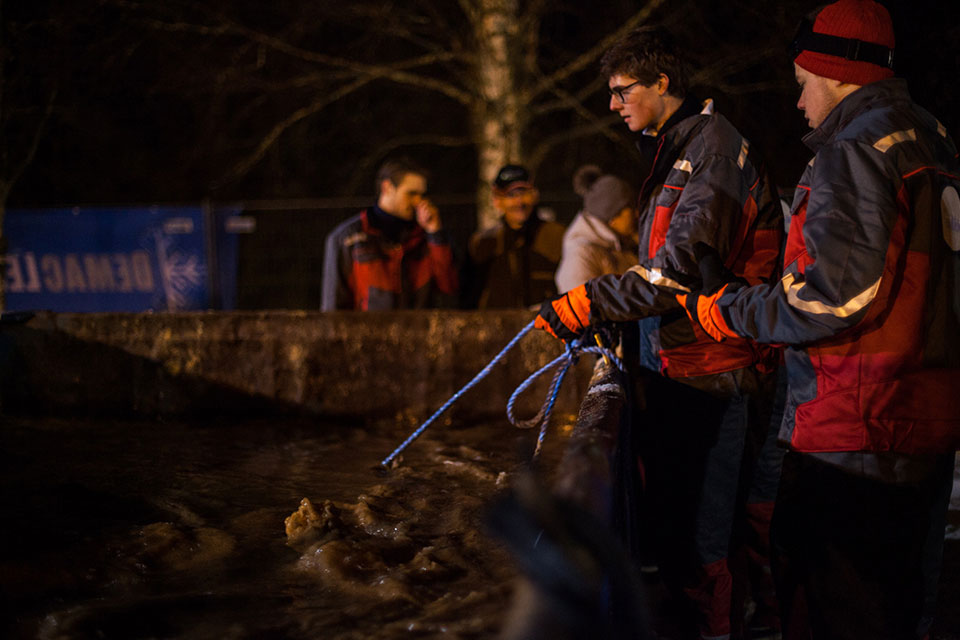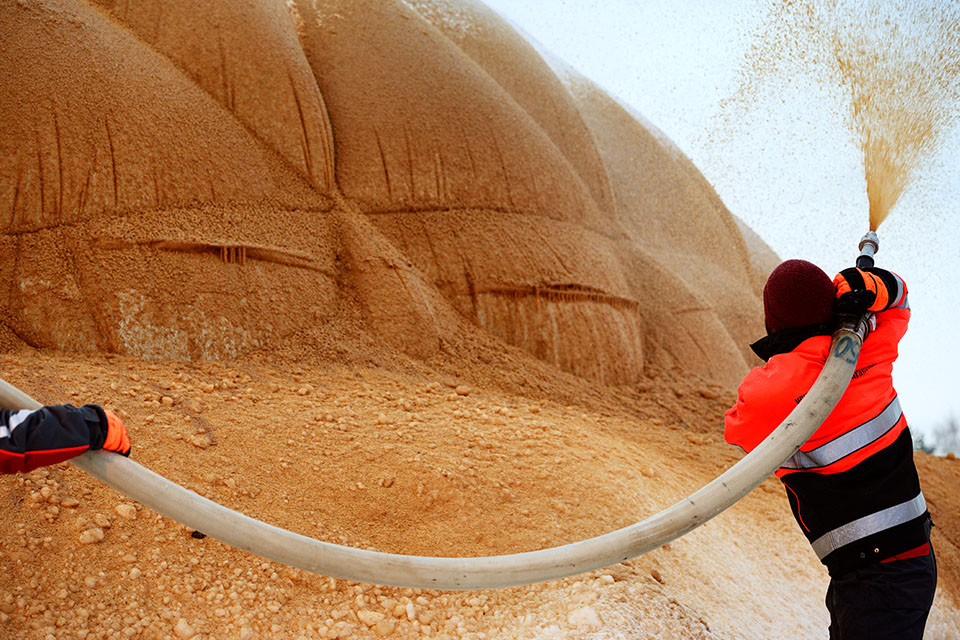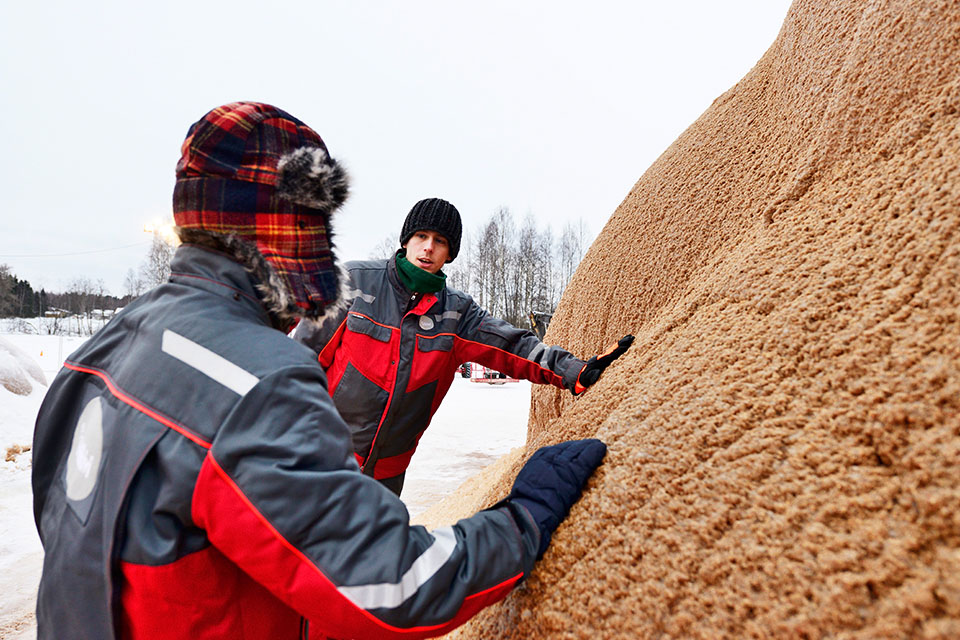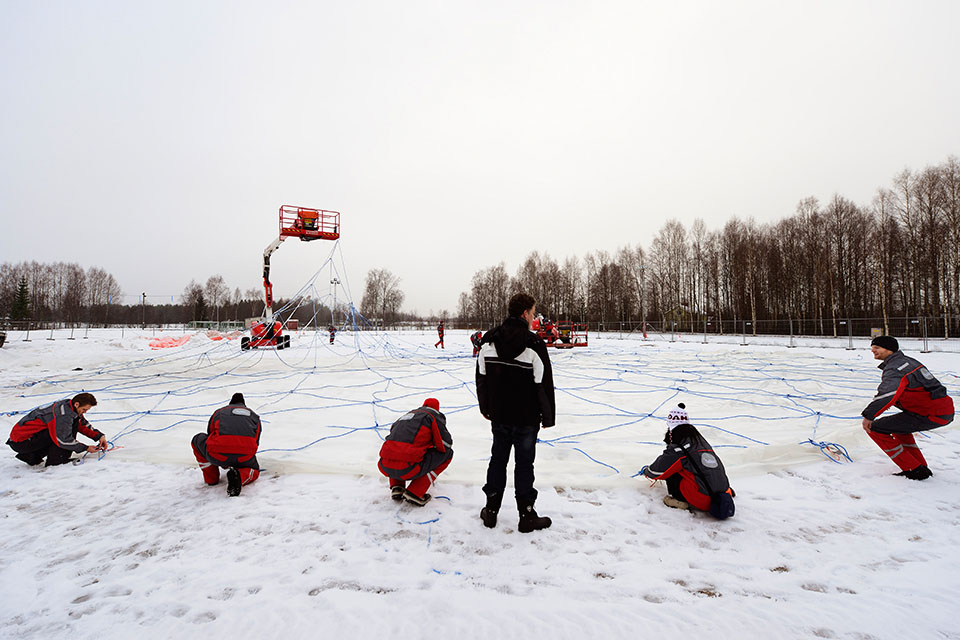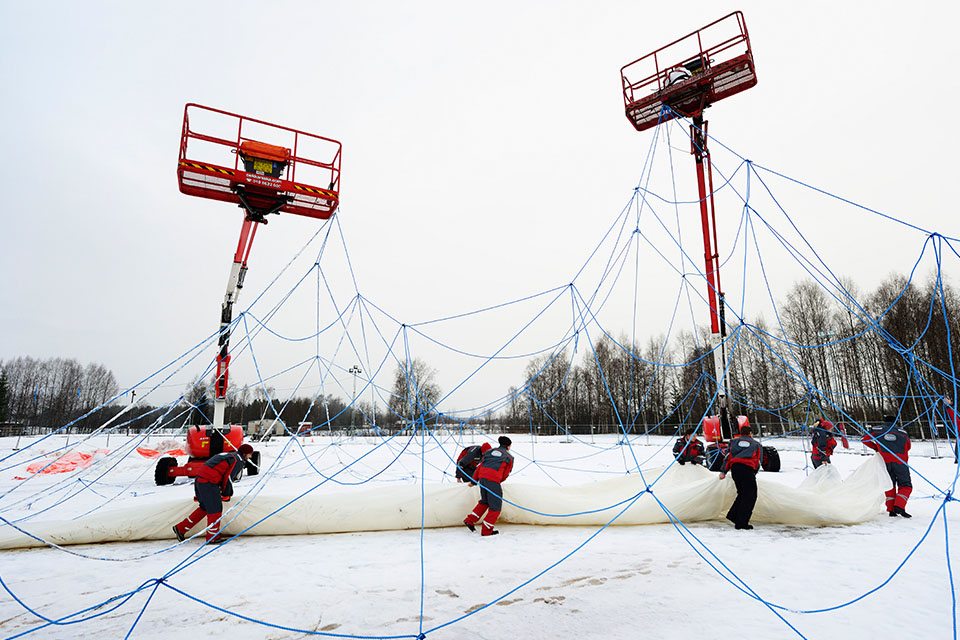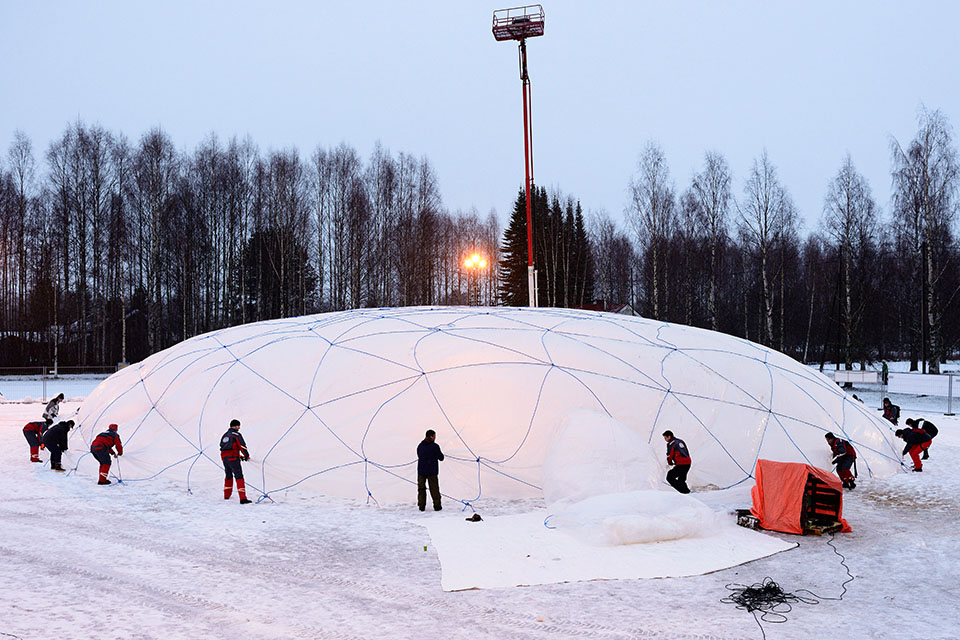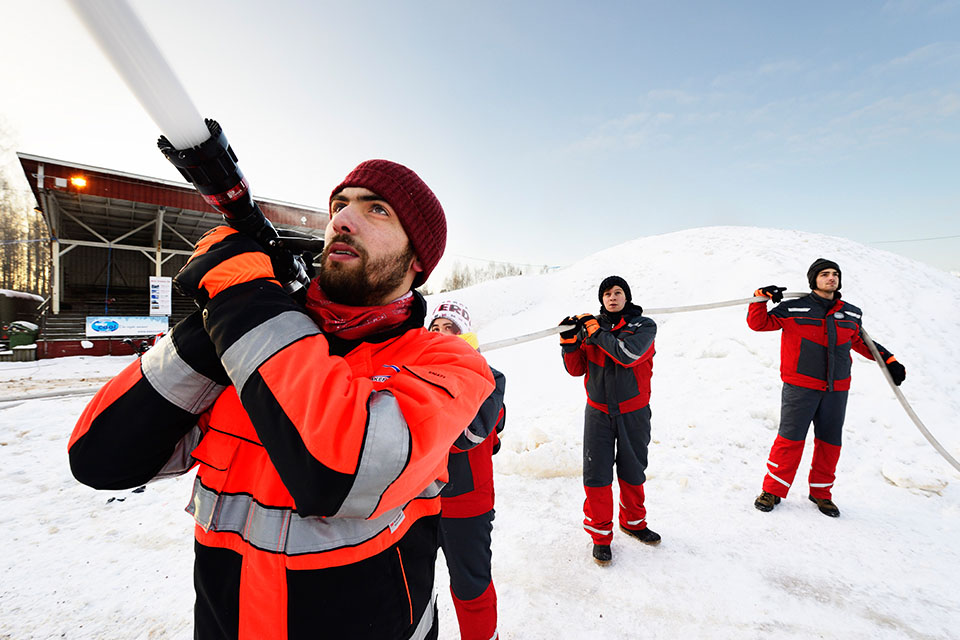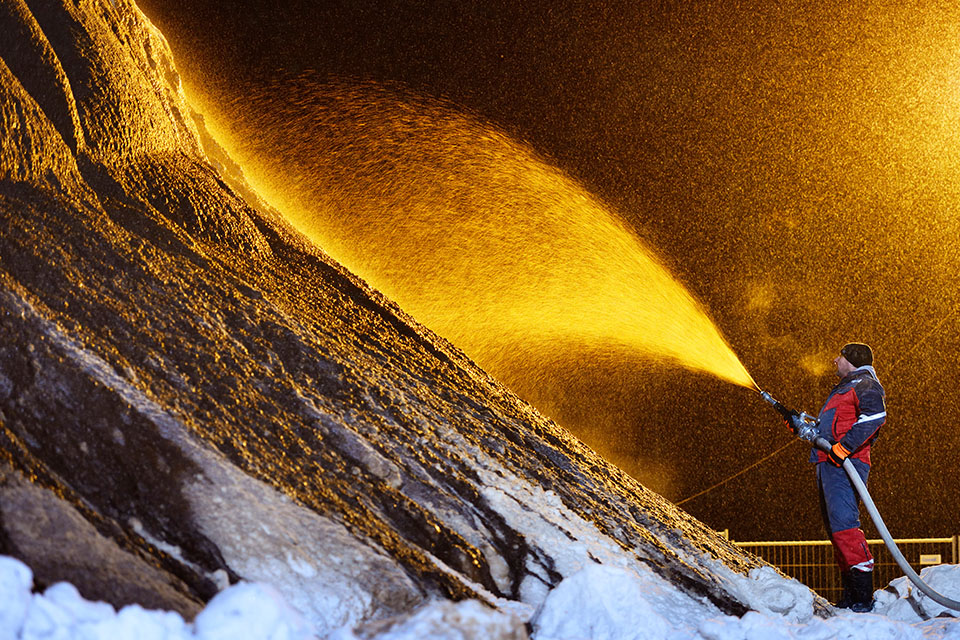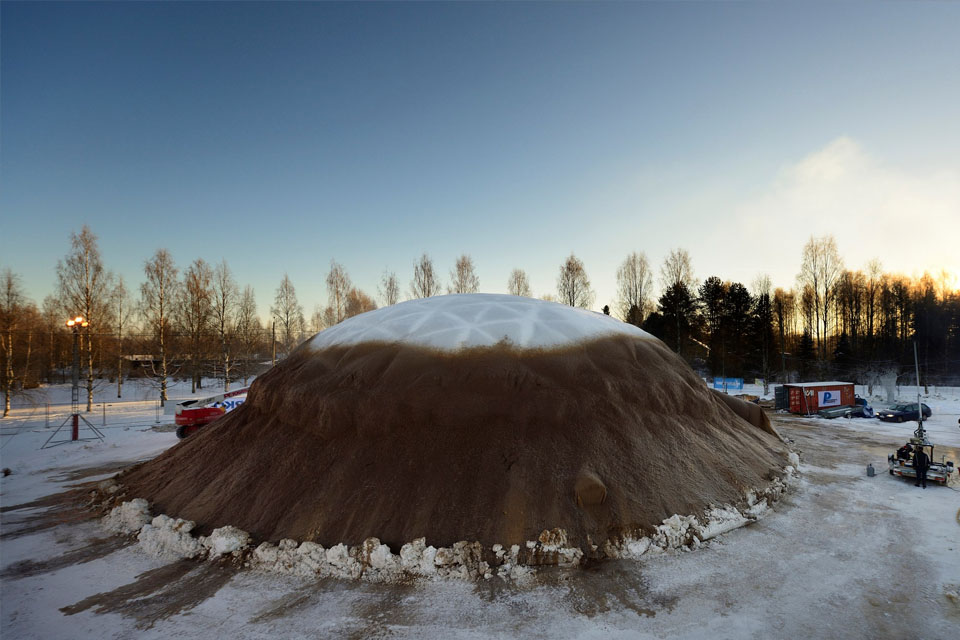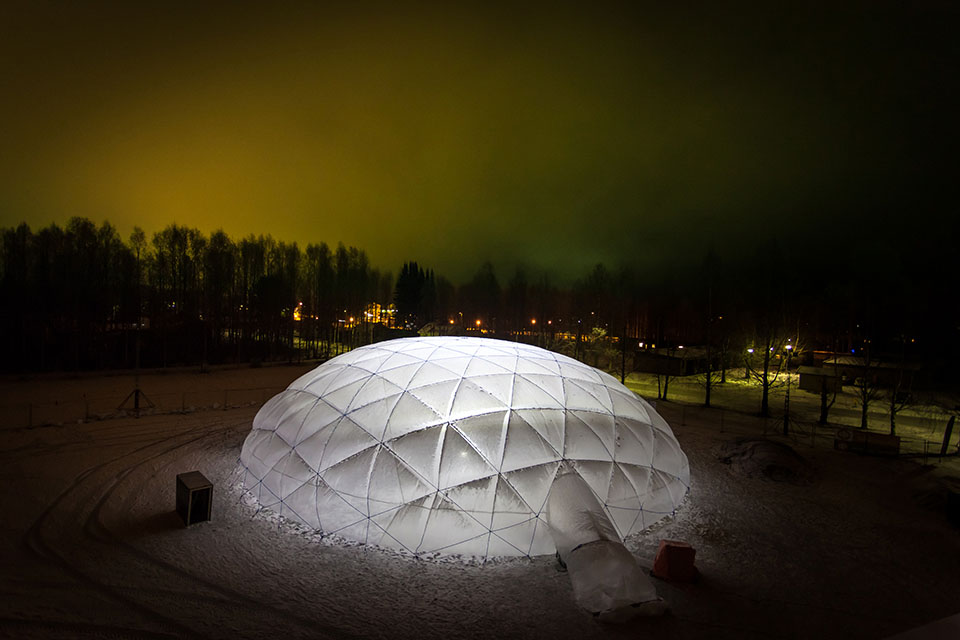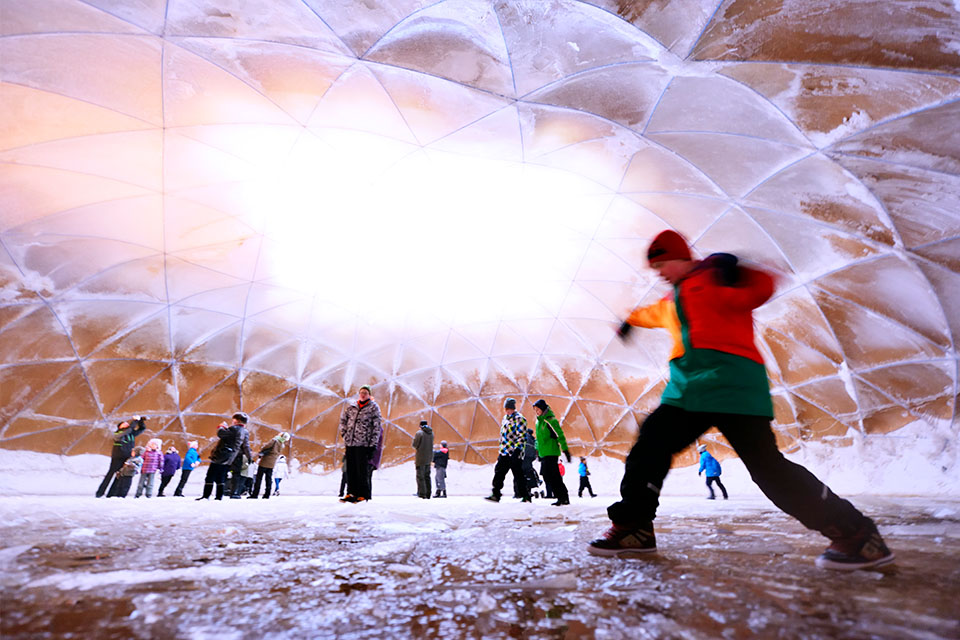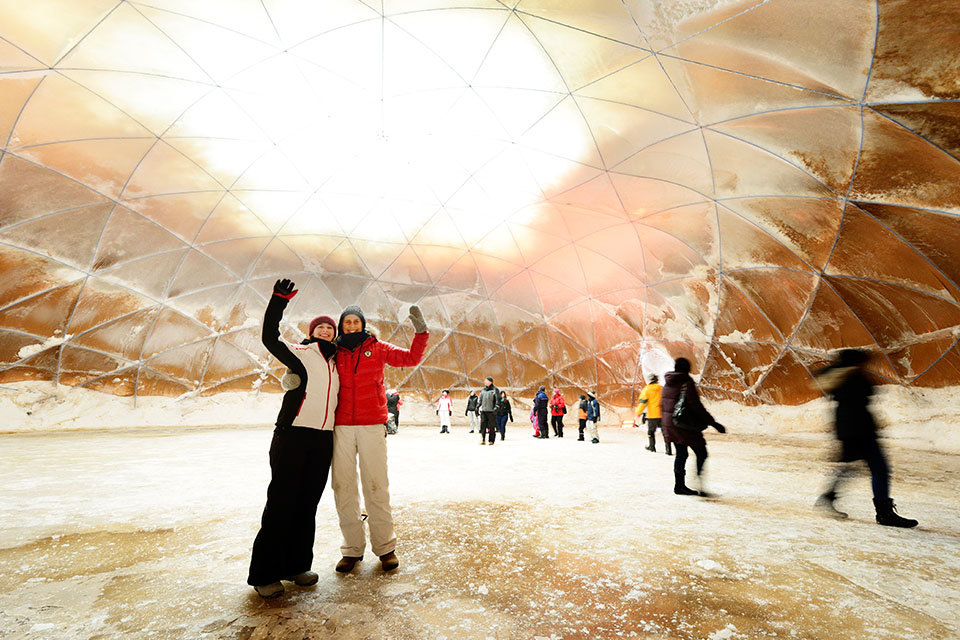Design
The shape of the ice structure is based on a geodesic dome, because this shape will only cause very little tensile forces in structure. Ice has very low tensile strength, but with this shape very thin ice structures are still possible. Structural analyses of the dome indicated that the largest forces occur at the bottom and around the entrance of the dome. For those reasons pykrete is applied only in the lower part of the dome. In the upper part plain ice is sufficient.
The design of the Pykrete Dome is based on the designs of Tsutomu Kokawa which has been experimenting with ice dome structures since the 80's. The largest, world record, ice dome he made had a span of 25 meters. The Pykrete Dome project has set a new record with span of 30 meters and a height of 10 meters.
